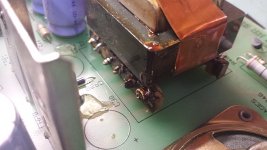Thanks for your suggestions. I only have a basic multimeter so can do some basic testing. Do you know where the SCR is on the power supply and any idea how I can test if this is faulty?
Also I replaced CR20 and CR21 rectifiers as they tested faulty with diode test in circuit. After replacing with new rectifiers they still show faulty with diode test, i.e. current passes both ways, but when removed from circuit they work correctly. Is this correct or is there a fault here?
Also I replaced CR20 and CR21 rectifiers as they tested faulty with diode test in circuit. After replacing with new rectifiers they still show faulty with diode test, i.e. current passes both ways, but when removed from circuit they work correctly. Is this correct or is there a fault here?

